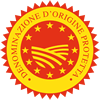Description
The Franciacorta PDO includes the following types of wine, obtained exclusively by secondary fermentation in the bottle: Franciacorta, Franciacorta Satèn and Franciacorta Rosé, which when matured for longer periods of time may be specified as being Millesimato (vintage) or Riserva . Depending on the sugar content, Franciacorta PDO wines can be: Brut, Extra Brut, Extra Dry, Sec, Demi-sec, Dosaggio Zero (no added sugar). The Satèn wine is only produced as Brut.
Production Area
The production area of Franciacorta PDO is within the territory of the municipalities of Paratico, Capriolo, Adro, Erbusco, Corte Franca, Iseo, Ome, Monticelli Brusati, Rodengo Saiano, Paderno Franciacorta, Passirano, Provaglio d’Iseo, Cellatica, Gussago, and parts of the municipalities of Brescia, Cologne, Coccaglio, Rovato and Cazzago San Martino, all in the Province of Brescia, in the Lombardy region.
Description of product typologies
Franciacorta PDO is straw-yellow, tending towards varying degrees of golden yellow with ageing, with a very light and consistent perlage; the nose offers floral and fruity fragrances with notes of yeast, bread crust and citron; it is sapid, fresh and complex on the palate, with delicate traces of citrus fruit. Franciacorta PDO Rosé is pink, varying in intensity,with a fine and intense perlage; the nose is ample and delicate, with notes of small red berries, typical of Pinot Nero, as well as the characteristics associated with secondary fermentation in the bottle. Franciacorta PDO Satèn is straw-yellow, at times intense or with greenish reflections, with a very fine, creamy and persistent perlage; it is delicate yet decisive on the nose, with a fragrance of ripe fruit and delicate notes of white flowers and dried fruit, also roasted; it is creamy, pleasantly sapid, fresh, harmonious and smooth on the palate. Franciacorta PDO Millesimato wines must be obtained from at least 85% grapes from the same year; they can be released for consumption 37 months after the grape harvest. Franciacorta PDO Riserva is reserved for Millesimato wines which have rested on the lees for at least 60 months. The vinification, bottling, including secondary fermentation in the bottle, disgorgement and packageing processes must be carried out within the delimited production area.


























![[VIDEO] - 1°Rapporto Turismo DOP: Strada del Franciacorta DOP](https://www.qualivita.it/wp-content/uploads/2025/07/Turismo-DOP-Strada-Franciacorta-DOP-210x118.jpg)
